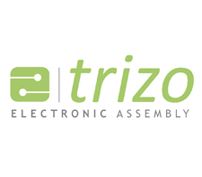- Contact 0870 350 7767
- |
- Advertise
Home > Trizo Limited > Embedded Passives in PCB Manufacturing
Embedded Passives in PCB Manufacturing
 News and PR from Trizo Limited - Published 18 November 2015
Embedding components during PCB manufacturing reduces device sizes and manufacturing costs.
News and PR from Trizo Limited - Published 18 November 2015
Embedding components during PCB manufacturing reduces device sizes and manufacturing costs.
The design of electronic devices, from mobile phones to smart wearables, is facing a constant challenge of miniaturisation and cost cutting. Manufacturers have to place increasingly complex components into an ever-decreasing space. Nevertheless, such components still occupy about 70% of a circuit board's surface area.
Embedding components - passives - within the circuit board substrate offers a solution to both of these challenges. They can reduce the circuit board assembly size as well as the PCB manufacturing costs.
The fundamental principle at play here is a reduction in the length of any electrical path in the device. The longer the path, the greater the danger of parasitic effects and signal distortions. This is a very serious problem when dealing the circuits using high frequencies, microprocessors and various memory devices.
Once the wiring length of any component is reduced, it decreases parasitic capacitances and inductances and so reduces the fluctuations in the electrical load and the noise generated by the entire system. A components such as a capacitor can be embedded directly beneath an integrated circuit pin and so minimise all negative effects.
Such embedded passives can also be used to create a shield to cut electromagnetic interference. Noise that is coupled both inductively and capacitively can be eliminated by the addition of plated through holes around the integrated circuit. This also eliminates the need for surface mounted shields.
Thermal management can be improved by adding a heat-conducting structure to the embedded component. The heat can dissipate via thermal plane layers.
The improvement in any device's reliability is one of the major advantages of embedded components over those components that are surface-mounted. Solder joints within the printed circuit board's framework are badly affected by frequent re-soldering. There is a major problem, however, with embedded components if they fail. It is not a straightforward matter either to test them or to replace then after a failure.
PCB manufacturing processes during the embedding of components can be divided into two main groups. The components can be aligned within the cavities as they are set in place, or they can be moulded into the substrates. In the second option, further component structures can be built up from that point.
The precision and accuracy of the positioning of these passives is best controlled using laser drilling.
You can browse our site to find out more, or feel free contact us if you have a query.
Embedding components - passives - within the circuit board substrate offers a solution to both of these challenges. They can reduce the circuit board assembly size as well as the PCB manufacturing costs.
The fundamental principle at play here is a reduction in the length of any electrical path in the device. The longer the path, the greater the danger of parasitic effects and signal distortions. This is a very serious problem when dealing the circuits using high frequencies, microprocessors and various memory devices.
Once the wiring length of any component is reduced, it decreases parasitic capacitances and inductances and so reduces the fluctuations in the electrical load and the noise generated by the entire system. A components such as a capacitor can be embedded directly beneath an integrated circuit pin and so minimise all negative effects.
Such embedded passives can also be used to create a shield to cut electromagnetic interference. Noise that is coupled both inductively and capacitively can be eliminated by the addition of plated through holes around the integrated circuit. This also eliminates the need for surface mounted shields.
Thermal management can be improved by adding a heat-conducting structure to the embedded component. The heat can dissipate via thermal plane layers.
The improvement in any device's reliability is one of the major advantages of embedded components over those components that are surface-mounted. Solder joints within the printed circuit board's framework are badly affected by frequent re-soldering. There is a major problem, however, with embedded components if they fail. It is not a straightforward matter either to test them or to replace then after a failure.
PCB manufacturing processes during the embedding of components can be divided into two main groups. The components can be aligned within the cavities as they are set in place, or they can be moulded into the substrates. In the second option, further component structures can be built up from that point.
The precision and accuracy of the positioning of these passives is best controlled using laser drilling.
You can browse our site to find out more, or feel free contact us if you have a query.
Other announcements from Trizo Limited
-
High-Temperature Resilient SMT Assembly
The development of interconnect materials to sustain high temperatures in SMT assembly
18 Nov 2015
-
Improving Cleaning Methods During Electronic Assembly
Safe solder cleaning during electronic assembly is needed to avoid damage to printed circuit boards.
18 Nov 2015





